
Welcome to
Success by Design - Mastering the Business of Interior Design
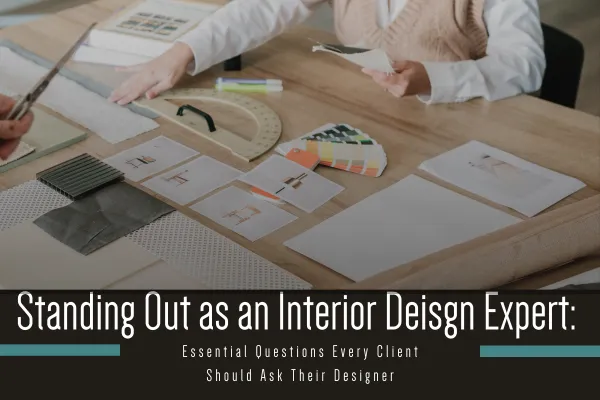
Standing Out as an Expert: Essential Questions Every Client Should Ask Their Interior Designer
Standing Out as an Expert: Essential Questions Every Client Should Ask Their Interior Designer
When our clients think about hiring a professional, be it a plumber or an HVAC technician, they expect them to justify their rates with specialized training, experience, and proven results. These professionals often charge around $119 per hour for their services, and we rarely question this fee because they understand the value of their expertise in solving complex issues.

When our clients hire us as interior designers, they should know exactly what they are getting and our job is to educate them. Just as a plumber or HVAC technician has niche training and experience, a skilled interior designer brings a wealth of knowledge and creativity to each project. Today on the blog, Katie shares her suggestions on how to educate your clients to ensure they recognize your expertise and the value you bring to their projects.
Key Questions Clients Should Be Asking Their Interior Designer
What is Your Vision for My Space?
Your Answer: Share your design philosophy and approach. Explain how you’ll tailor your vision to match their lifestyle and preferences, providing examples of past projects to illustrate your ability to bring client visions to life.
What Experience Do You Have in This Industry?
Your Answer: Highlight your years of experience and the diversity of projects you’ve handled. Whether it’s residential, commercial, or a specific design style, showcase your breadth of knowledge and how it equips you to meet their specific needs.
What Are Your Credentials and Educational Background?
Your Answer: Detail your formal education in interior design, any certifications you hold, and memberships in professional associations. This underscores your commitment to maintaining industry standards and ongoing professional development.
Can You Provide References or Examples of Past Work?
Your Answer: Present a curated portfolio of your best work along with testimonials from satisfied clients. This not only builds trust but also gives potential clients a tangible sense of your capabilities and style.
How Do You Approach Budget Management?
Your Answer: Discuss your method for managing budgets effectively, ensuring quality results within financial constraints. Provide examples of previous projects where you successfully balanced budget and design excellence.
What Is Your Design Process?
Your Answer: Outline the entire design process, from the initial consultation to project completion. Transparency in your workflow helps clients understand what to expect and highlights your organized and professional approach.
How Do You Handle Challenges or Unexpected Issues?
Your Answer: Share your problem-solving skills and specific instances where you’ve overcome challenges in past projects. This reassures clients of your ability to handle unforeseen situations effectively.
What Makes You Different from Other Designers?
Your Answer: Identify and articulate your unique selling points, whether it’s a particular design style, exceptional customer service, or a specialized niche. This is your opportunity to differentiate yourself from competitors and emphasize why clients should choose you.
The Work Behind the Scenes: Unseen Yet Essential
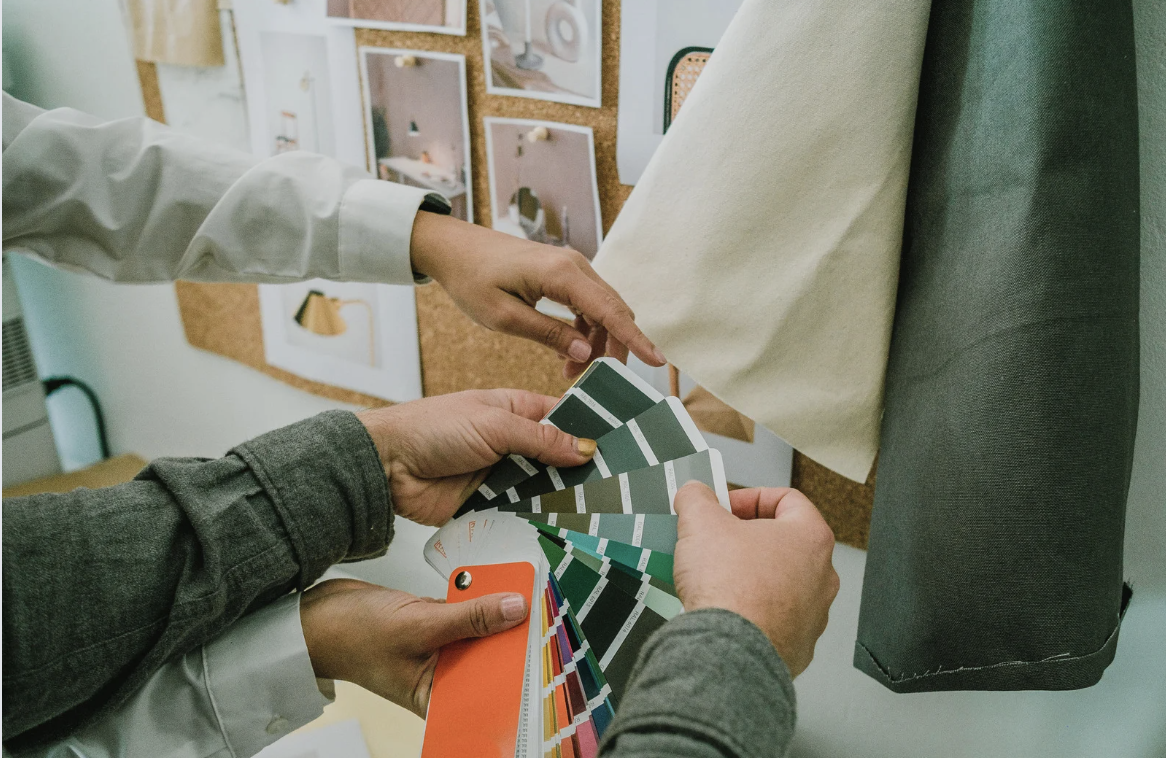
Interior design involves much more than what clients see during meetings. There’s a significant amount of behind-the-scenes work that goes into each project. From conceptualizing and designing to procuring materials and coordinating with service providers, these tasks are time-consuming and require meticulous attention to detail.
As an interior designer, you spend countless hours researching the best materials, negotiating with suppliers, and ensuring that every element aligns with the overall design vision.
This unseen labor is a crucial part of delivering a seamless and high-quality final product.
Illustrating the Design Process: Contracts, Schedules, and Checklists
To help clients understand the comprehensive nature of your work, it’s beneficial to provide a detailed outline of your design process. This can be done through:
Contracts: Clearly outline the scope of work, including the stages of design, procurement, and project management. A well-drafted contract helps set expectations and ensures transparency.
Schedules: Provide a timeline that breaks down each phase of the project. This helps clients visualize the progression and appreciate the time required for each step.
Checklists: Share checklists that detail the tasks involved in each phase. This can include design development, sourcing materials, coordinating with contractors, and quality checks. Checklists not only keep the project on track but also highlight the thoroughness of your approach.
By presenting these documents, you illustrate the complexity and breadth of the work involved, reinforcing the value of your services.

Educating Your Clients: Building Value in Discovery Time
The adage "we don't know what we don't know" rings true, especially in interior design. Many clients may not be aware of the complexities involved in transforming a space or the depth of expertise required. This is where your role as an educator becomes crucial.
Use your initial consultations and interactions to educate your clients. By doing so, you are building value even during this discovery phase. Explain the importance of each question and how your answers can impact the outcome of their project. This educational approach serves multiple purposes:
Informed Decisions: Educated clients are more likely to make informed decisions, leading to better project outcomes.
Trust Building: By sharing your knowledge, you build trust and establish yourself as an authority in the field.
Value Justification: Clients who understand the intricacies of your work are more likely to appreciate the value you bring, justifying your fees and setting you apart from less knowledgeable competitors.
Client Engagement: Engaged and informed clients are more invested in the project, leading to a smoother design process and higher satisfaction rates.
Imagine a potential client is unaware of the importance of having a cohesive design vision or the impact of budget management. By educating them on these aspects, you help them see the necessity of your expertise. This proactive approach not only positions you as a trusted advisor but also increases the likelihood that they will choose you for their project.
If you want to boost your confidence and grow your business by establishing your expertise and setting yourself apart from the competition, schedule a strategy session with me, Katie Decker-Erickson. Let’s work together to showcase your value and elevate your interior design business. You can find more about my services and schedule a session at colorworks.coach
Want more details on this topic? Check out our podcast, Success by Design: Mastering the Business of Interior Design with Laura Thornton, where we deep dive into this in a discussion format. We've also made this topic actionable for you with a very specific product in the Studio called FINANCE: Choosing Your Pricing Model.
Use these tools to get your business working for you, rather than you working for it!

I'm your host, Katie Erickson
I’m a commercial exterior and interior designer with an MBA and nearly 20 years in the industry. When I’m not leading my coast-to-coast, multi-million dollar firm, I love sharing real talk on the business of design, blending insights from 20 years as a business professor. I keep it honest—balancing work and chasing my two girls around.

Standing Out as an Expert: Essential Questions Every Client Should Ask Their Interior Designer
Standing Out as an Expert: Essential Questions Every Client Should Ask Their Interior Designer
When our clients think about hiring a professional, be it a plumber or an HVAC technician, they expect them to justify their rates with specialized training, experience, and proven results. These professionals often charge around $119 per hour for their services, and we rarely question this fee because they understand the value of their expertise in solving complex issues.

When our clients hire us as interior designers, they should know exactly what they are getting and our job is to educate them. Just as a plumber or HVAC technician has niche training and experience, a skilled interior designer brings a wealth of knowledge and creativity to each project. Today on the blog, Katie shares her suggestions on how to educate your clients to ensure they recognize your expertise and the value you bring to their projects.
Key Questions Clients Should Be Asking Their Interior Designer
What is Your Vision for My Space?
Your Answer: Share your design philosophy and approach. Explain how you’ll tailor your vision to match their lifestyle and preferences, providing examples of past projects to illustrate your ability to bring client visions to life.
What Experience Do You Have in This Industry?
Your Answer: Highlight your years of experience and the diversity of projects you’ve handled. Whether it’s residential, commercial, or a specific design style, showcase your breadth of knowledge and how it equips you to meet their specific needs.
What Are Your Credentials and Educational Background?
Your Answer: Detail your formal education in interior design, any certifications you hold, and memberships in professional associations. This underscores your commitment to maintaining industry standards and ongoing professional development.
Can You Provide References or Examples of Past Work?
Your Answer: Present a curated portfolio of your best work along with testimonials from satisfied clients. This not only builds trust but also gives potential clients a tangible sense of your capabilities and style.
How Do You Approach Budget Management?
Your Answer: Discuss your method for managing budgets effectively, ensuring quality results within financial constraints. Provide examples of previous projects where you successfully balanced budget and design excellence.
What Is Your Design Process?
Your Answer: Outline the entire design process, from the initial consultation to project completion. Transparency in your workflow helps clients understand what to expect and highlights your organized and professional approach.
How Do You Handle Challenges or Unexpected Issues?
Your Answer: Share your problem-solving skills and specific instances where you’ve overcome challenges in past projects. This reassures clients of your ability to handle unforeseen situations effectively.
What Makes You Different from Other Designers?
Your Answer: Identify and articulate your unique selling points, whether it’s a particular design style, exceptional customer service, or a specialized niche. This is your opportunity to differentiate yourself from competitors and emphasize why clients should choose you.
The Work Behind the Scenes: Unseen Yet Essential

Interior design involves much more than what clients see during meetings. There’s a significant amount of behind-the-scenes work that goes into each project. From conceptualizing and designing to procuring materials and coordinating with service providers, these tasks are time-consuming and require meticulous attention to detail.
As an interior designer, you spend countless hours researching the best materials, negotiating with suppliers, and ensuring that every element aligns with the overall design vision.
This unseen labor is a crucial part of delivering a seamless and high-quality final product.
Illustrating the Design Process: Contracts, Schedules, and Checklists
To help clients understand the comprehensive nature of your work, it’s beneficial to provide a detailed outline of your design process. This can be done through:
Contracts: Clearly outline the scope of work, including the stages of design, procurement, and project management. A well-drafted contract helps set expectations and ensures transparency.
Schedules: Provide a timeline that breaks down each phase of the project. This helps clients visualize the progression and appreciate the time required for each step.
Checklists: Share checklists that detail the tasks involved in each phase. This can include design development, sourcing materials, coordinating with contractors, and quality checks. Checklists not only keep the project on track but also highlight the thoroughness of your approach.
By presenting these documents, you illustrate the complexity and breadth of the work involved, reinforcing the value of your services.

Educating Your Clients: Building Value in Discovery Time
The adage "we don't know what we don't know" rings true, especially in interior design. Many clients may not be aware of the complexities involved in transforming a space or the depth of expertise required. This is where your role as an educator becomes crucial.
Use your initial consultations and interactions to educate your clients. By doing so, you are building value even during this discovery phase. Explain the importance of each question and how your answers can impact the outcome of their project. This educational approach serves multiple purposes:
Informed Decisions: Educated clients are more likely to make informed decisions, leading to better project outcomes.
Trust Building: By sharing your knowledge, you build trust and establish yourself as an authority in the field.
Value Justification: Clients who understand the intricacies of your work are more likely to appreciate the value you bring, justifying your fees and setting you apart from less knowledgeable competitors.
Client Engagement: Engaged and informed clients are more invested in the project, leading to a smoother design process and higher satisfaction rates.
Imagine a potential client is unaware of the importance of having a cohesive design vision or the impact of budget management. By educating them on these aspects, you help them see the necessity of your expertise. This proactive approach not only positions you as a trusted advisor but also increases the likelihood that they will choose you for their project.
If you want to boost your confidence and grow your business by establishing your expertise and setting yourself apart from the competition, schedule a strategy session with me, Katie Decker-Erickson. Let’s work together to showcase your value and elevate your interior design business. You can find more about my services and schedule a session at colorworks.coach
Want more details on this topic? Check out our podcast, Success by Design: Mastering the Business of Interior Design with Laura Thornton, where we deep dive into this in a discussion format. We've also made this topic actionable for you with a very specific product in the Studio called FINANCE: Choosing Your Pricing Model.
Use these tools to get your business working for you, rather than you working for it!
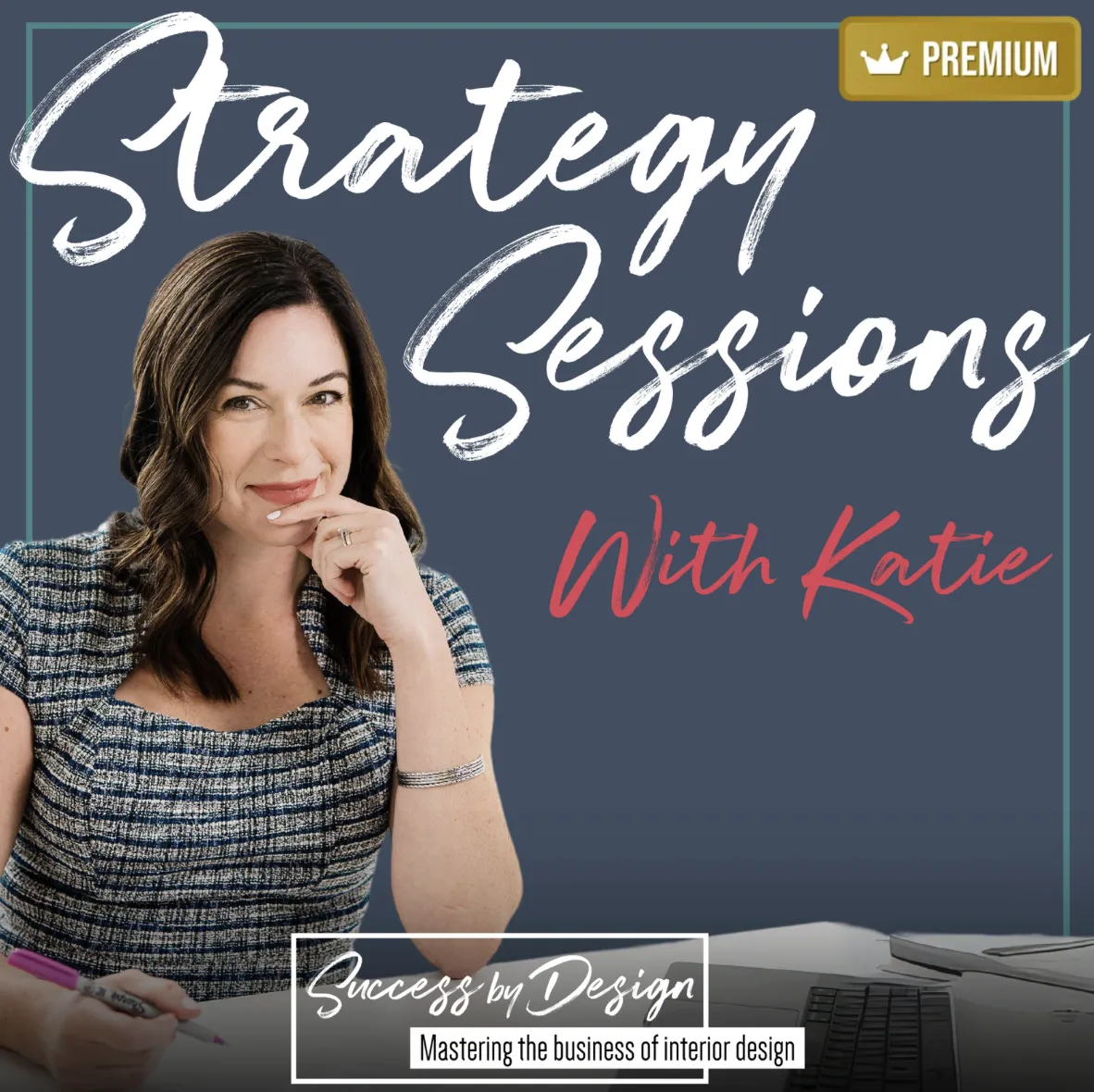
Want More Actionable Insight?
We’re excited to offer even more access to Katie Decker-Erickson! With Katie's new premium channel, you’ll enjoy ad-free episodes of Success by Design and exclusive Strategy Sessions that dive deeper into actionable insights for growing your interior design business. Subscribe now to get fresh, uninterrupted content every week—and enjoy two free months with an annual subscription!
Interested In Sponsoring The Podcast?

Standing Out as an Expert: Essential Questions Every Client Should Ask Their Interior Designer
Standing Out as an Expert: Essential Questions Every Client Should Ask Their Interior Designer
When our clients think about hiring a professional, be it a plumber or an HVAC technician, they expect them to justify their rates with specialized training, experience, and proven results. These professionals often charge around $119 per hour for their services, and we rarely question this fee because they understand the value of their expertise in solving complex issues.

When our clients hire us as interior designers, they should know exactly what they are getting and our job is to educate them. Just as a plumber or HVAC technician has niche training and experience, a skilled interior designer brings a wealth of knowledge and creativity to each project. Today on the blog, Katie shares her suggestions on how to educate your clients to ensure they recognize your expertise and the value you bring to their projects.
Key Questions Clients Should Be Asking Their Interior Designer
What is Your Vision for My Space?
Your Answer: Share your design philosophy and approach. Explain how you’ll tailor your vision to match their lifestyle and preferences, providing examples of past projects to illustrate your ability to bring client visions to life.
What Experience Do You Have in This Industry?
Your Answer: Highlight your years of experience and the diversity of projects you’ve handled. Whether it’s residential, commercial, or a specific design style, showcase your breadth of knowledge and how it equips you to meet their specific needs.
What Are Your Credentials and Educational Background?
Your Answer: Detail your formal education in interior design, any certifications you hold, and memberships in professional associations. This underscores your commitment to maintaining industry standards and ongoing professional development.
Can You Provide References or Examples of Past Work?
Your Answer: Present a curated portfolio of your best work along with testimonials from satisfied clients. This not only builds trust but also gives potential clients a tangible sense of your capabilities and style.
How Do You Approach Budget Management?
Your Answer: Discuss your method for managing budgets effectively, ensuring quality results within financial constraints. Provide examples of previous projects where you successfully balanced budget and design excellence.
What Is Your Design Process?
Your Answer: Outline the entire design process, from the initial consultation to project completion. Transparency in your workflow helps clients understand what to expect and highlights your organized and professional approach.
How Do You Handle Challenges or Unexpected Issues?
Your Answer: Share your problem-solving skills and specific instances where you’ve overcome challenges in past projects. This reassures clients of your ability to handle unforeseen situations effectively.
What Makes You Different from Other Designers?
Your Answer: Identify and articulate your unique selling points, whether it’s a particular design style, exceptional customer service, or a specialized niche. This is your opportunity to differentiate yourself from competitors and emphasize why clients should choose you.
The Work Behind the Scenes: Unseen Yet Essential

Interior design involves much more than what clients see during meetings. There’s a significant amount of behind-the-scenes work that goes into each project. From conceptualizing and designing to procuring materials and coordinating with service providers, these tasks are time-consuming and require meticulous attention to detail.
As an interior designer, you spend countless hours researching the best materials, negotiating with suppliers, and ensuring that every element aligns with the overall design vision.
This unseen labor is a crucial part of delivering a seamless and high-quality final product.
Illustrating the Design Process: Contracts, Schedules, and Checklists
To help clients understand the comprehensive nature of your work, it’s beneficial to provide a detailed outline of your design process. This can be done through:
Contracts: Clearly outline the scope of work, including the stages of design, procurement, and project management. A well-drafted contract helps set expectations and ensures transparency.
Schedules: Provide a timeline that breaks down each phase of the project. This helps clients visualize the progression and appreciate the time required for each step.
Checklists: Share checklists that detail the tasks involved in each phase. This can include design development, sourcing materials, coordinating with contractors, and quality checks. Checklists not only keep the project on track but also highlight the thoroughness of your approach.
By presenting these documents, you illustrate the complexity and breadth of the work involved, reinforcing the value of your services.

Educating Your Clients: Building Value in Discovery Time
The adage "we don't know what we don't know" rings true, especially in interior design. Many clients may not be aware of the complexities involved in transforming a space or the depth of expertise required. This is where your role as an educator becomes crucial.
Use your initial consultations and interactions to educate your clients. By doing so, you are building value even during this discovery phase. Explain the importance of each question and how your answers can impact the outcome of their project. This educational approach serves multiple purposes:
Informed Decisions: Educated clients are more likely to make informed decisions, leading to better project outcomes.
Trust Building: By sharing your knowledge, you build trust and establish yourself as an authority in the field.
Value Justification: Clients who understand the intricacies of your work are more likely to appreciate the value you bring, justifying your fees and setting you apart from less knowledgeable competitors.
Client Engagement: Engaged and informed clients are more invested in the project, leading to a smoother design process and higher satisfaction rates.
Imagine a potential client is unaware of the importance of having a cohesive design vision or the impact of budget management. By educating them on these aspects, you help them see the necessity of your expertise. This proactive approach not only positions you as a trusted advisor but also increases the likelihood that they will choose you for their project.
If you want to boost your confidence and grow your business by establishing your expertise and setting yourself apart from the competition, schedule a strategy session with me, Katie Decker-Erickson. Let’s work together to showcase your value and elevate your interior design business. You can find more about my services and schedule a session at colorworks.coach
Want more details on this topic? Check out our podcast, Success by Design: Mastering the Business of Interior Design with Laura Thornton, where we deep dive into this in a discussion format. We've also made this topic actionable for you with a very specific product in the Studio called FINANCE: Choosing Your Pricing Model.
Use these tools to get your business working for you, rather than you working for it!

insightful conversations & super RELATABLE!
Excited for a podcast directed towards interior designers that covers the business and creative mindsets needed to run a successful firm. Throwing in life balance to every conversation makes this super relatable. Great conversations.
Colorful Conversations is like having a fun chat with your artsy friend who also knows how to create success! Katie's podcast is a must-listen for folks who love design and want to make money from their creative passions. She keeps you in the loop about the latest design trends while dropping priceless tips on turning your creativity into a successful business. Whether you're a design enthusiast or a budding entrepreneur, Katie's show is a goldmine of ideas and inspiration. So, tune in and get ready to blend style and success with her friendly and informative episodes – you won't want to miss it!
Why Don't you leave us a Review too?


Here's What listeners Are saying...
Listener Reviews
insightful conversations & super RELATABLE!
Excited for a podcast directed towards interior designers that covers the business and creative mindsets needed to run a successful firm. Throwing in life balance to every conversation makes this super relatable. Great conversations.
Colorful Conversations is like having a fun chat with your artsy friend who also knows how to create success! Katie's podcast is a must-listen for folks who love design and want to make money from their creative passions. She keeps you in the loop about the latest design trends while dropping priceless tips on turning your creativity into a successful business. Whether you're a design enthusiast or a budding entrepreneur, Katie's show is a goldmine of ideas and inspiration. So, tune in and get ready to blend style and success with her friendly and informative episodes – you won't want to miss it!
Why Don't you leave us a Review too?
wanna join us? Sign up as a guest.
Would you Like Katie to Be a Guest on Your Show?
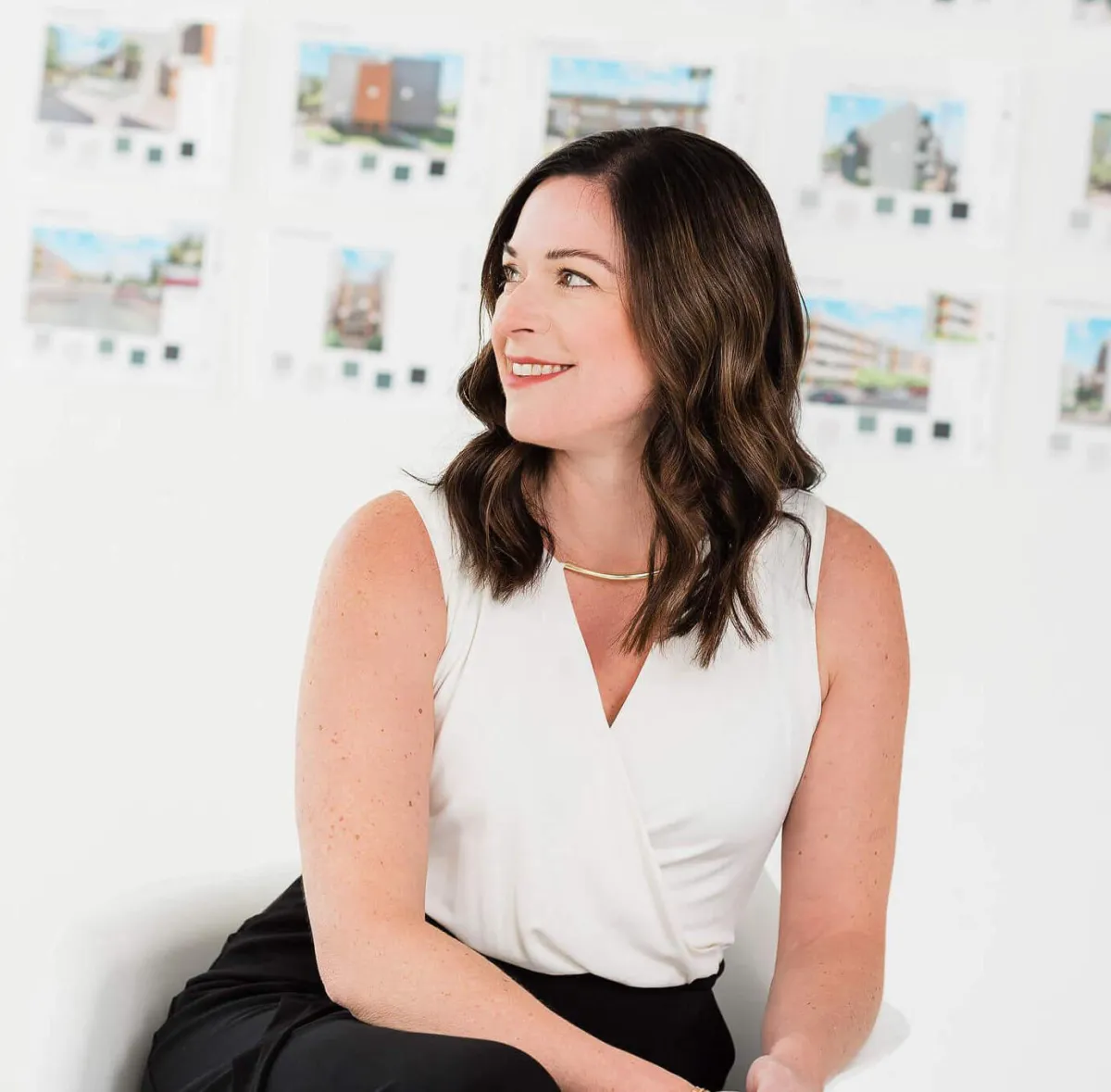
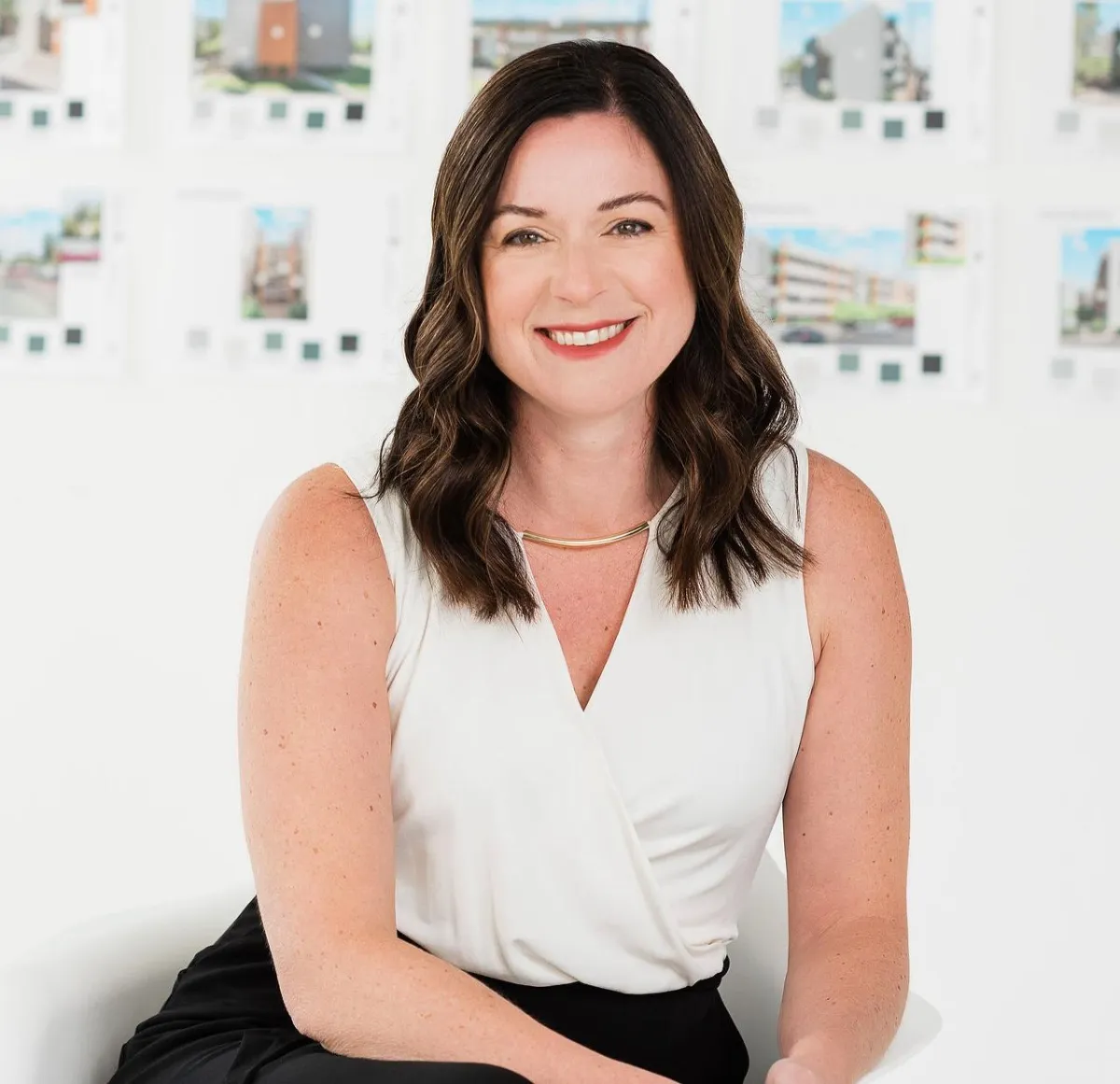
Explore
Successbydesign.coach- All Rights Reserved - Terms & Conditions - Cookie Policy


